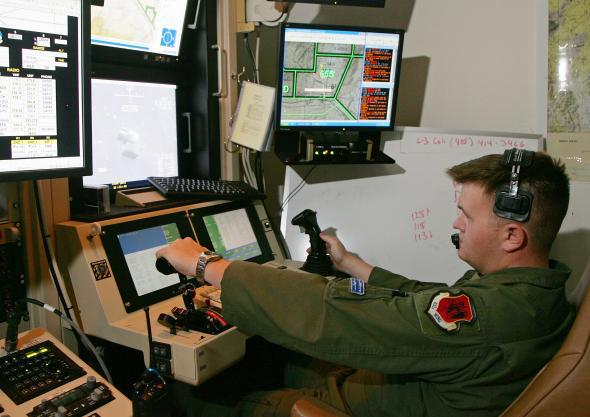Being a drone pilot (if you’re flying a drone used to deploy weapons) is about the most unhappy profession imaginable. You carry the weight of knowing you are responsible for killing people, but you’re doing it from a darkened room halfway around the world while looking at a screen, relying on others’ judgments that what you’re doing is morally acceptable or strategically useful, deprived of even the sensory experience, physical challenge, and danger that a pilot of a manned craft might be distracted by.
It’s probably not surprising, in other words, that the Air Force has difficulty recruiting airmen for the position. Reports the Wall Street Journal:
A range of world-wide security crises, including Iraq, Syria and Afghanistan, and security situations in places like Yemen, North Korea and China, have resulted in a high demand among military commanders for the kind of intelligence, surveillance and reconnaissance—or ISR—that only drones, some of which have strike capabilities, provide.
But the Air Force, which flies Predator, Reaper and Global Hawk drones, has struggled to keep up with that demand largely due to the service’s inability to identify, train and retain enough drone pilots. The service trains about 180 such pilots a year, but loses about 230.
Drone pilots “fly” up to 900 hours a year—that’s about 17 hours per week.
To mitigate the shortage, the WSJ says, the Air Force will begin offering $15,000 annual bonuses to drone pilots who extend their terms while also assigning some flight-school graduates to mandatory drone service for the first time.
A drone operator named Brandon Bryant spoke to the late journalist Matthew Power about the psychological impact of carrying out remote killings for a 2013 GQ piece called “Confessions of a Drone Warrior.” Wrote Power: “[Bryant] says that when flying missions, he sometimes felt himself merging with the technology, imagining himself as a robot, a zombie, a drone itself.” When Bryant left the Air Force after six years of service, officials told him that the missions he’d participated in had killed 1,626 people.
